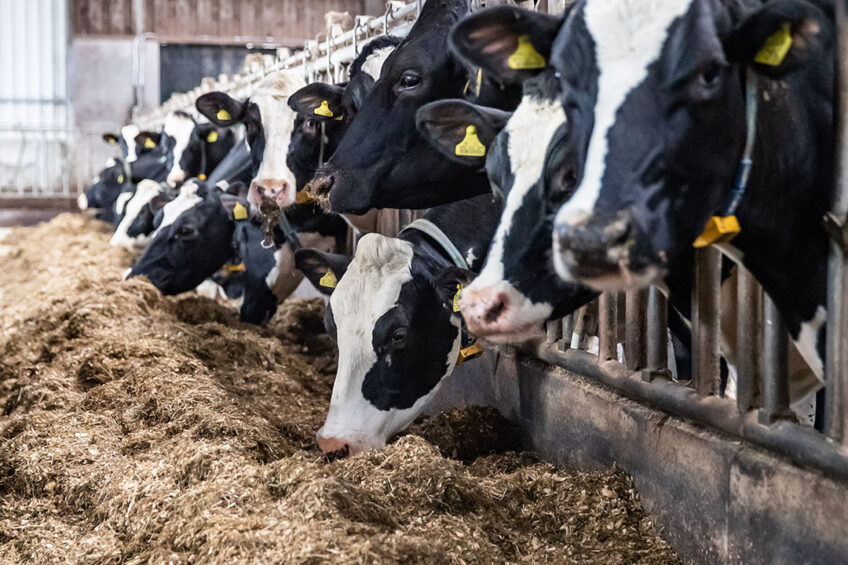Sustainable dairy: Establishing net-zero farms

In the UK, 2 pioneering dairy and suckler farms are part of a group of 5 that will accelerate and demonstrate their journey to net zero.
The 3-year project, led by green farming organisation LEAF (Linking Environment and Farming), and supported by the Co-op Foundation, will see farmers developing and implementing a range of sustainable, integrated farming practices.
They will focus on soil, water, air and nature to gain a better understanding of the levers for change for addressing net zero and environmental enhancement. In return, they will receive training, mentoring and technical support from external consultants and LEAF’s technical team with a focus on reducing greenhouse gas emissions.
The farmers will be working towards joining the LEAF network as its first net-zero demonstration farms and to act as hubs for training and inspiration for other farmers as they begin their transition to net zero.
Vicky Robinson, LEAF technical director, said the ground-breaking project would support forward-thinking and innovative farmers with the tools, training and technical know-how to work towards these targets, collaborating and learning from each other.
“Farmers hold a unique power to be an innovative part of the solutions to climate change. We are hugely grateful for the support of the Co-op Foundation, which will enable us to drive forward more climate-positive farming and food systems for the future health of our planet,” said Robinson.
Dairy farmers
Rachel and Richard Risdon are tenant farmers on a 150-hectare dairy farm, running a grass-based herd of 300 Friesian x Jersey cows at Bramford Speke, near Exeter, Devon, supplying milk to Arla, which has mapped the carbon footprint of the raw material from the farm.
Grass at Bramford Speke is mainly ryegrass with clover. The spring-block calving herd yields about 5,000 litres per cow. Cows are grazed rotationally on a New Zealand-style paddock system, staying outside on the clay loam over river gravel soil until late November.
The couple run a low-cost system with cows once fully housed being self-fed silage, with each consuming about 1 tonne from an open clamp face and a cake-based blend of wheat and sugar beet pulp. Cows go back out once they calve in February with about 3-5kg of concentrate and no silage.
Rachel, also a practising vet, and Richard are an innovative couple bringing their experiences of farming both in the UK and New Zealand to shape their practices today. They are keen to understand more about their carbon footprint, how to protect water courses and encourage more biodiversity on-farm.
Located in the Scottish border, Stuart Mitchell, along with his wife Kate and parents, farm a 442-hectare mixed organic farm, including 140 suckler cows with a herd of breeding deer and 50 hectares of arable land. Already incorporating low-intensity practices, the family are keen to find the right balance of productivity and understand more about their organic system on the route to net zero and beyond.
The other farmers are upland sheep farmer Bob Clark, who runs a pure-bred flock of 200 Herdwick ewes plus a flock of draft ewes crossed with Texel and Cheviot tups; fourth-generation carrot and parsnip business Huntapac, which farms 1,300 hectares from Norfolk to Inverness, and Alan, Graeme and Valerie Whyte, who farm 2,000 hectares of avocados, macadamia nuts, pecans, timber and woodland in Northern Limpopo, South Africa.
NFU approach
The UK’s National Farmers’ Union has set the ambitious target of reaching net zero greenhouse gas emissions across the whole of agriculture in England and Wales by 2040. Jonathan Wilkinson, NFU Cymru Dairy Board chairman Jonathan Wilkinson said the industry would do this through:
- Boosting productivity – for example his cows wear monitors allowing him to track their well-being and adjust their diets and farm practices.
- Carbon sequestration
- Renewable energy – his farm works with neighbouring holdings to supply slurry to mix with their poultry manure, to produce 1MW of electricity through anaerobic digestion. This produces valuable nutrients in the form of digestate, which reduces the need for artificial fertilisers.
Join 13,000+ subscribers
Subscribe to our newsletter to stay updated about all the need-to-know content in the dairy sector, two times a week.










